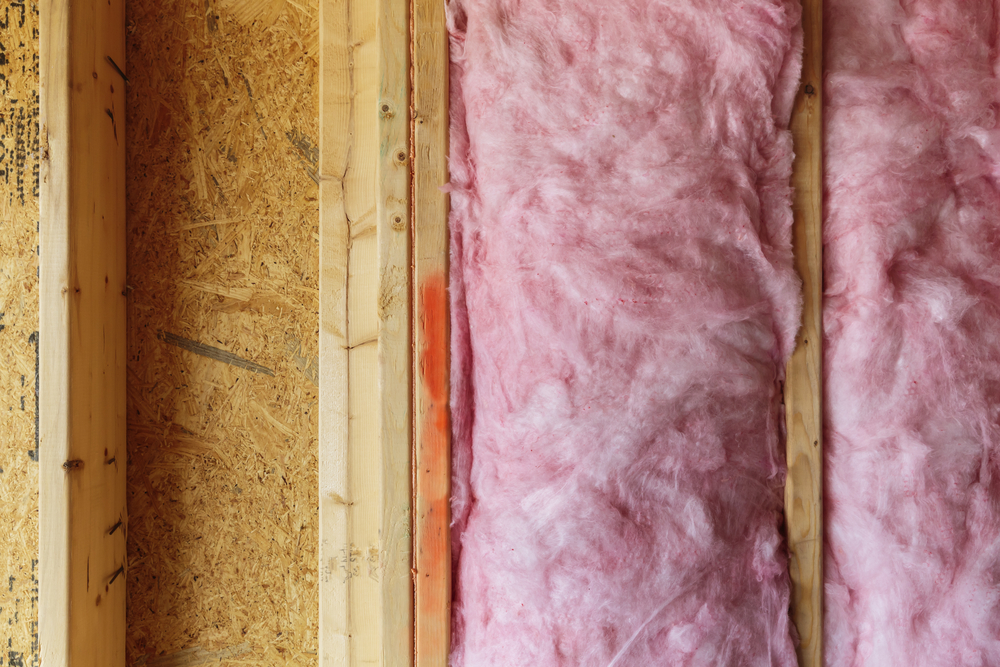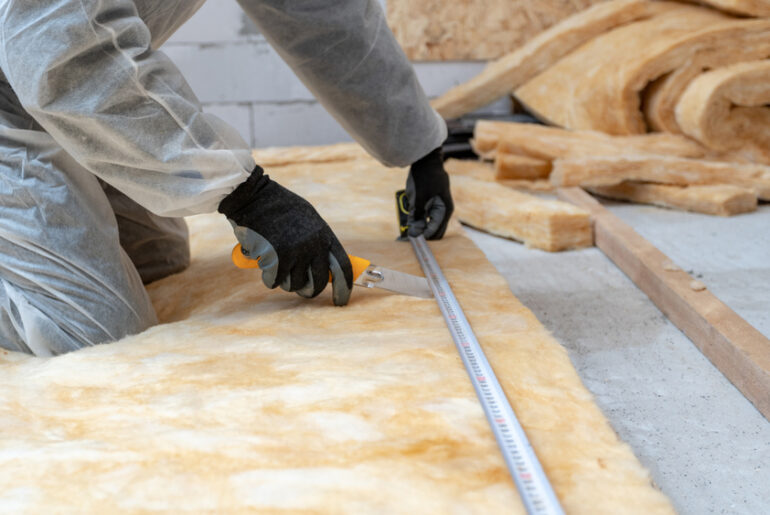Working with fiberglass insulation comes with the risk of having the material stuck on your clothing. Fiberglass is known for its stubborn-to-remove property, and exposure to it can aggravate itching and cause severe skin irritation.
Once the tiny fiberglass gets into your clothes, getting them out can become very tricky. Worst still, it is easy to spread the particles into more clothes, get the irritants on your body, or damage those sets of clothes entirely. But can you safely get fiberglass out of your clothing without ruining it for good?
You can get most of the fiberglass particles out of your clothes by brushing them out while it is still dry. The rest of the particles will be safely removed by machine washing the clothes with the necessary precautions and a few extra steps.
This article covers all you need to know to remove fiberglass insulation from your clothing safely.
Can You Remove Fiberglass Insulation From Clothes?
While it is a bit challenging to avoid getting fiberglass on your clothes when installing it, removing fiberglass from your cloth is not so difficult once you follow the right steps.
However, you still need to be careful when working with fiberglass. Getting fiberglass insulation on your clothes is one thing, but spreading it to your body can cause itchiness, rashes, and redness in the area of contact. Fiberglass can also cause serious coughing and sneezing if you inhale the particles.
Brushing out the fiberglass particles in your clothing with a lint roller and a gentle brush is the first step of removing fiberglass insulation from your clothes. You will still have to machine wash the clothes and rinse them multiple times to be sure you are rid of it all. The next section covers the step-by-step process of removing fiberglass insulation from your clothing.
If you’d like to learn more on how to safely dispose of insulation, follow our guide How to Properly Dispose of Fiberglass Insulation.
How to Remove Fiberglass Insulation From Clothes
If you have gotten fiberglass in your clothing, the first thing to do is to make sure that you prevent those clothes from getting in contact with other clothing. When you take off clothes that have been exposed to fiberglass insulation, pack them in a plastic bag until you are ready to remove the fiberglass. There are a few ways you can remove fiberglass from your clothing and they include:
Dry Removal
You can safely remove fiberglass particles from your clothing before even touching it with water through the following steps.
- To remove fiberglass from your clothing while it is still dry, you will need a gentle brush, lint roller, duct tape, or a combination of the three.
- Clear the working area of other clothing materials to prevent getting the fiberglass on them.
- Spread out the exposed clothing on a flat surface
- Gently brush out the fiberglass particles with your brush or lint roller
- Stick some duct tape on areas of fiberglass particles that the brush or lint roller can’t get out. The duct tape should force it out on removal
- Put the clothes in a washing machine once you have combed every area of the clothes with your brush or lint roller
Soaking in Water
If you find the dry removal too tedious, you can alternatively pre-soak your clothing in water to remove most of the fiberglass using the following steps:
- Fill your bathtub or a bucket with warm water
- Drop the fiberglass exposed clothes in the water and allow them to soak for an hour
- Put on latex gloves to protect your hands while you stir the clothes to get as many fiberglass particles off as possible
- You can replace the water in the tub or bucket and beat the clothes more
- Take your clothes out of the water and place them in a washing machine
Using Washing Machine
Eventually, you will need to wash your clothes with the washing machine to make sure that all the fiberglass particles are removed. You should not mix clothes exposed to fiberglass insulation with other clothes; else, you risk spreading the particles on them.
Just wash the clothes as you normally would, following these steps:
- Put the clothes exposed to fiberglass in the washing machine
- Add your usual laundry detergent or recommended cleaning agents to the washing machine
- Wash the clothes in the washing machine at the normal settings and rinse them afterward.
- Use the wash and rinse cycle multiple times — without detergent — to get rid of any extra fiberglass residue in the cloth.
- Dry the clothes as you usually do.
Why Do You Need To Be Cautious Around Fiberglass Insulation?
Exposure to fiberglass has been thought to cause various skin and respiratory irritations, provoke allergies, and cause cancer. Fortunately, recent research has ruled out fiberglass as a carcinogen; that is, it does not cause cancer. However, fiberglass remains a dangerous material that requires caution to handle. So it is important to follow all safety measures while handling the material.
Fiberglass is usually made from recycled glass processed into a fiber-like material and held together by resins. The tiny glass particles that make up the bulk of the material can get carried by wind or clothes.
When fiberglass particles leave tiny cuts and scratches that cause itchiness when they come in contact with the skin, the area can also redden and appear as a rash. The effects are even worse if the fiberglass particles get stuck in your skin pores which causes blisters and serious irritations.
A similar irritation happens when fiberglass particles make contact with your eyes, leaving them red and itchy.
You can also breathe in fiberglass dust which causes coughing and sneezing. Inhaling fiberglass particles can also trigger allergic reactions and worsen conditions like asthma and bronchitis. If you find yourself with any of these symptoms, you should leave the vicinity and take a long shower to remove the fiberglass particles on your skin and in your eyes.
Luckily, most of the effects of fiberglass are temporary, and the symptoms start easing once you have left the vicinity. You can easily avoid all these symptoms by carefully handling fiberglass insulation and wearing protective clothing.
What Clothes to Use When Your Work With Fiberglass
Wearing the appropriate clothing allows you to work comfortably while shielding you from fiberglass exposure.
First, you need to make sure your skin does not get in contact with fiberglass. You should wear long-sleeved clothes and long pants that cover your body when you work with fiberglass. In addition, you should put it on plastic or disposable paper overall to prevent the fiberglass particles from getting on your skin.
You will also need to cover the parts of your body that are still exposed, like the feet and hands. That is, you wear socks on your feet and gloves on your hand. Wearing a hat and putting on the hood overall will also help protect your hair and scalp from fiberglass particles.
Next is your face. You should wear goggles to protect your eyes and wear dust masks to prevent fiberglass particles from getting into your airways. You can get all of these gears from DIY or hardware stores.





